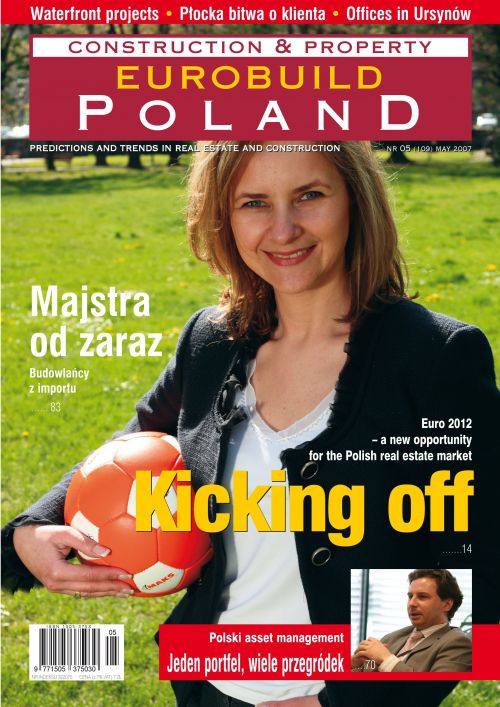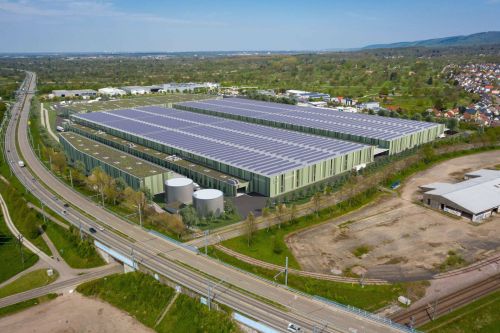From bedroom to back office
When people think of the office districts of Warsaw, Ursynów is not the place that first springs to mind. It is often referred to in the capital as the ‘dormitory’ of the city. However, this perception of the suburb might be about to change
In April this year came the announcement that UBM and CA Immo International of Austria are intending to develop the 200,000 sqm Poleczki Business Park, and not in any of Warsaw’s recognized business districts, but on ul. Poleczki in Ursynów. Construction work for this project is likely to begin in the fourth quarter of this year. Poleczki Business Park will eventually have a total area of 200,000 sqm once completed, with 17 buildings, including a 3-star hotel, a logistics buildings and a car park. And all this in what is supposed to be a dormitory district.
Apart from the city centre, the other main locations for office developments are Wola and Mokotów, with the latter only truly geographically separate from the city centre. The latter is the location of the 107,000 sqm Mokotów Business Park, the development of which was begun in 1995 by Globe Trade Centre in the sub-district of Służewiec. This has been, until now, the largest office complex in Poland; it was also the catalyst for the other office developments nearby, which line such streets as ul. Wołoska, ul. Domaniewska and ul. Marynarska. Poleczki Business Park, once completed, will be even bigger than Mokotów Business Park. The question this raises is whether this could be the first stage in the development
of a whole new business
district.
Accidents can happen
Rolf Grossmayer, a member of the board of Larrisa,
a special purpose vehicle set up for the Poleczki Business Park development, reveals how the project began: “We got this land almost by accident – we had a contact to the people selling it. The previous owners, Uniprom, had gone bankrupt, so we bought the land from the official receiver. I wouldn’t say the plot was
a gift, but it came at a very reasonable price. It was something of a risk for us, but it was one we decided was worth taking.”
The idea for a business park came out of conversations UBM had with their tenants in other properties, who according to Mr Grossmayer “often ask for additional storage space. But if they are based in the city centre, such space would have to be dislocated from their offices – in a completely different location.” Poleczki Business Park is laid out so that the office space is on the upper floors of the buildings, and the business space is below. Storage will be provided in building designated for logistics purposes, which will feature an automated racking system for pallets. Having just one building for this purpose, claims Mr Grossmayer, is “an innovation of ours, a new concept which will make the business operations of our customers much cheaper, since otherwise they would have to have this function in their own buildings. It also allows us to use just one logistics operator.”
So what are the main characteristics of the district chosen for this complex? The area around ul. Poleczki is moreorless to the immediate south of Służewiec, and to the west of ul. Puławska – the main road leading south out of Warsaw – and the residential areas of Ursynów over the east side of Puławska. Development is sparse in the district, but there are already a number of smaller single-office buildings dotted around the junction of Poleczki and Pulawska, including the Netia and Bosh buildings. But the largest development in the area to date is Platan Park, a warehousing and office complex of app. 53,000 sqm, the majority of which is warehouse space. On the other side of Poleczki is Warsaw’s Okęcie airport, to which at the moment there is no direct road link from Poleczki over the railway line. This, however, is due to change in the next few years with improvements to the local road infrastructure, including an extension of Poleczki over the railway.
Re-directing traffic
In Rolf Grossmayer’s view, the area has several advantages for office development: “Ursynów we feel is a very attractive location. One big advantage is the traffic situation – from this point of view it is much better than Mokotów or the city centre. Ul. Poleczki is being extended over the railway to the airport, and the south circular will also be eventually constructed.”
However, there is no universal consensus about the traffic situation around Poleczki being advantageous. Jeroen van der Toolen, the head of Ghelamco in Poland, which is active in Mokotów (Trinity Park and Marynarska Business Park are developments in this district by the firm), is not convinced. “There is only one access road – Poleczki – and if jams start to occur in the future when the volume of traffic increases, this could be a disaster. The extension of Poleczki over the railway to the airport will certainly increase the flow of traffic, as freight which currently uses ul. Marynarska in Mokotów will then be driven along Poleczki.” There is also a lack of public transport in the district, with no trams, only a couple of buses and the metro being on the other side of Ursynów. For this reason, Platan Park has provided a shuttle bus service for its employees. Richard Aboo, head of the office agency and a partner of Cushman & Wakefield, on the other hand feels that the current lack of public transport provision will only be an interim problem: “Once the business park is developed, there will be quite a lot of pressure on the authorities to improve this – and this is something that is also the case elsewhere. Traffic is a general problem in the southern part of Warsaw, and will remain so until the Służewiec area is improved. But in the next 2–3 years, we should see much improvement.”
Another reason, according to Rolf Grossmayer, for locating for a business park here, was the success so far of Platan Park – on a neighbouring plot and now nearly fully-leased. “The fact that Platan Park is virtually full demonstrates that demand exists in the area,” argues Mr Grossmayer. “However, we would not be in competition with Platan Park because it is mainly a logistics centre and we would therefore not have the same customers. But our respective customers could theoretically use the services of both parks.” Mateusz Polkowski, leasing and marketing consultant at Platan Group, agrees that both centres are to the benefit of each other: “We are not afraid of PBP’s competition, because our buildings enjoy a good reputation, we have great tenants and we are still improving our real estate. The competition is good for the market!”
PBP the new MBP
Rolf Grossmayer claims that: “It will take between 10 and 15 years to complete the entire park, and it is hard to estimate the demand that could be created in the area for other projects, but we believe that Ursynów could develop into a major business district such as Mokotów.” Mateusz Polkowski also believes that “ul. Poleczki may become a new ‘Mokotów Business Park’ consisting of Platan Park and Poleczki Business Park.” Anna Kot, head of Jones Lang LaSalle’s office agency, agrees that “Ursynów is a good location. Mokotów is getting more and more dense. There are
a lot of office-warehouse type possibilities in Ursynów – so there can be all types of product. The idea of developing a business park in Ursynów is becoming evident among developers - the reason behind this is that companies already in the district might want to relocate to a bigger space.”
Richard Aboo of Cushman & Wakefield holds the view that Poleczki Business Park will have “enough critical mass to boost developments around it.” However, he feels that the character of these will be different than in other districts: “Companies prefer to have their HQs in Służew and Mokotów where they have more visibility. So in and around Poleczki Business Park we should see industrial-type tenants, telecoms, call centres, IT and R&D companies.” Mr Aboo also points out that there will always be a price differential between this part of Ursynów and Mokotów: “Rents should always be lower than in Mokotów. It is an up-and-coming location; but it will always have a link with storage and warehousing and have an industrial nature, whereas locations such as ul. Żwirki i Wigury near the airport will have a higher class office character.”
Fortune favours the brave
Jeroen van der Toolen of Ghelamco is of a similar opinion: “Poleczki is going to be
a good ‘B’ or ‘C+’ location for back offices, but not for HQs. Good for companies such as DHL and Datapost, and for other companies who need to have offices combined with logistics, but I can’t see many multinationals with many employees moving there,” claims Mr Van der Toolen. He also feels that the development of Poleczki Business Park may be a little premature, as he goes on: “In the very long term, Ursynów may be a good location... Mokotów will dry up one day, and this part of Ursynów is the obvious place for office developers to look at next – but it all depends on when this happens. 5 years is maybe too optimistic – but sometimes it pays off to be optimistic.”
Nathan North





















































